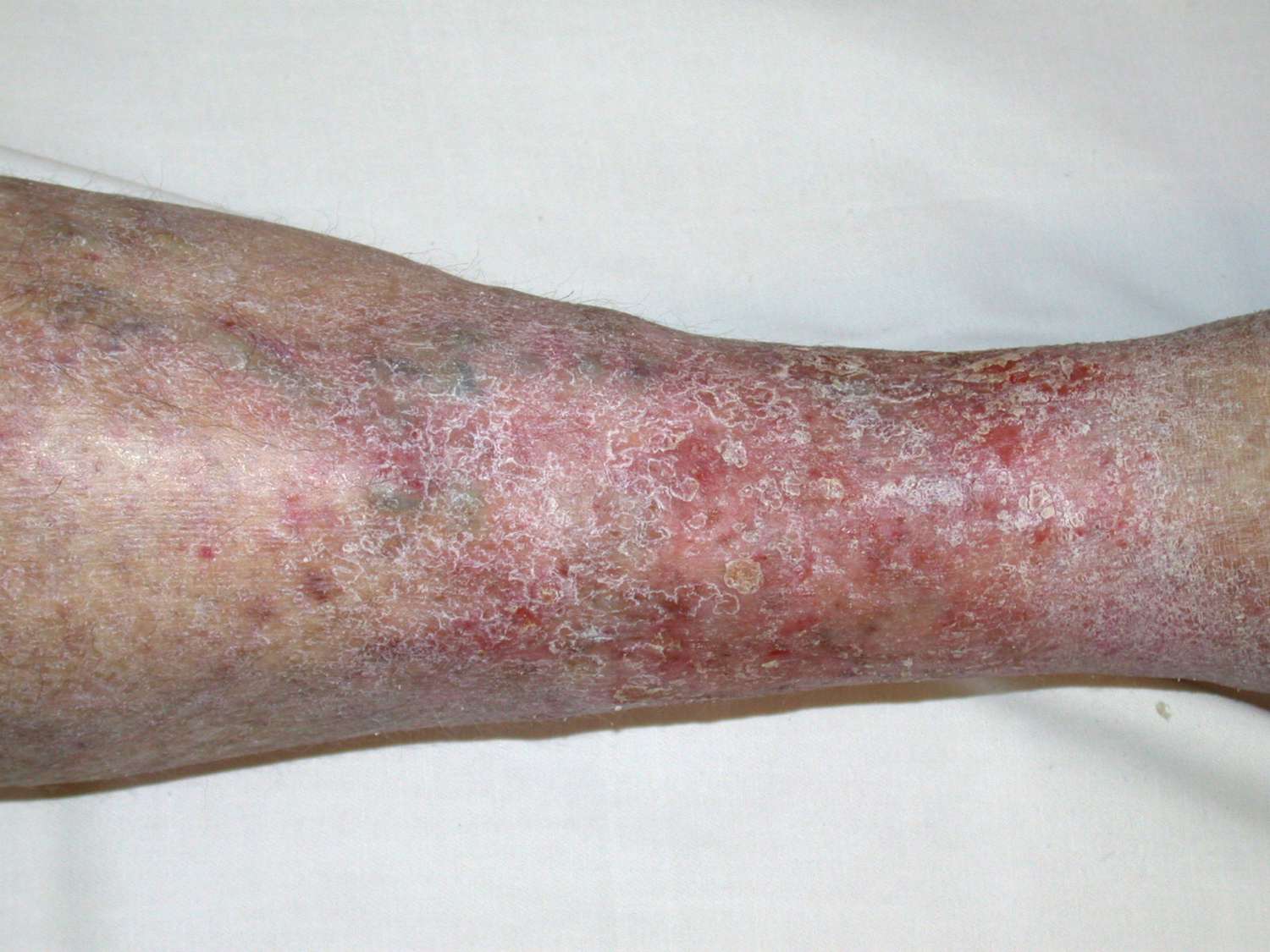What are the symptoms of venous stasis dermatitis?
Venous stasis dermatitis is a condition resulting from poor blood circulation, often due to chronic venous insufficiency. The symptoms typically occur on the lower legs and can include:
- Redness and Inflammation: The skin may appear red and inflamed, particularly around the ankles and lower legs.
- Itching: Persistent itching is a common symptom, often accompanied by a rash.
- Swelling: The affected area may experience swelling due to fluid accumulation.
- Skin Changes: The skin can become dry, flaky, or scaly. Over time, it may also become thickened or leathery.
- Discoloration: Darkening of the skin, particularly around the ankles, is common. This may appear as brownish or purplish staining.
- Pain or Discomfort: There may be a feeling of heaviness, pain, or discomfort in the legs.
- Ulcers: In severe cases, venous stasis dermatitis can lead to the development of open sores or ulcers on the skin, usually around the ankles. These ulcers can be slow to heal and are often prone to infection.
If you experience these symptoms, especially if you have a history of chronic venous insufficiency or varicose veins, it is important to seek medical evaluation and treatment. Early intervention can help manage symptoms and prevent complications.
What are the causes of venous stasis dermatitis?
Venous stasis dermatitis is primarily caused by chronic venous insufficiency, which impairs proper blood flow in the veins. Here are the main causes and contributing factors:
- Chronic Venous Insufficiency (CVI): This is the primary cause, where weakened or damaged veins fail to return blood effectively to the heart, leading to blood pooling and increased pressure in the veins of the lower legs.
- Varicose Veins: Enlarged, twisted veins that can contribute to venous insufficiency and subsequent dermatitis.
- Deep Vein Thrombosis (DVT): Previous blood clots in the deep veins of the legs can cause long-term damage to the veins, leading to venous insufficiency and stasis dermatitis.
- Obesity: Excess body weight puts additional pressure on the veins, contributing to venous insufficiency and increasing the risk of dermatitis.
- Prolonged Standing or Sitting: Extended periods of standing or sitting can impede blood flow and exacerbate venous insufficiency.
- Age: Aging can lead to the weakening of vein walls and valves, making venous insufficiency and stasis dermatitis more common in older adults.
- Pregnancy: Increased blood volume and hormonal changes during pregnancy can strain the veins and contribute to venous insufficiency.
- Trauma or Injury: Previous injuries to the legs can damage veins and contribute to poor circulation and stasis dermatitis.
- Sedentary Lifestyle: Lack of physical activity can impair circulation and contribute to venous problems.
- Genetic Factors: A family history of venous disease may increase the likelihood of developing venous stasis dermatitis.
Effective management involves addressing the underlying venous insufficiency and may include lifestyle changes, medical treatments, and sometimes surgical interventions.
What is the treatment for venous stasis dermatitis?
Treatment for venous stasis dermatitis focuses on managing the underlying venous insufficiency and alleviating symptoms. Here are the common approaches:
1. Addressing Venous Insufficiency:
- Compression Therapy: Wearing compression stockings helps improve blood flow and reduce swelling. These stockings apply pressure to the legs, which can alleviate symptoms and prevent worsening of the condition.
- Leg Elevation: Elevating the legs above the level of the heart several times a day helps reduce swelling and improve circulation.
2. Symptom Management:
- Topical Treatments: Applying moisturizers to soothe dry, itchy skin. Steroid creams may be prescribed by a healthcare provider to reduce inflammation and itching.
- Antibiotics: If there is an infection or open sores (ulcers), topical or oral antibiotics may be needed to treat the infection.
- Wound Care: Proper care for any venous ulcers, including cleaning, dressing, and sometimes debridement, to promote healing and prevent infection.
3. Lifestyle and Home Remedies:
- Regular Exercise: Engaging in activities like walking helps improve circulation and support vein function.
- Weight Management: Maintaining a healthy weight reduces pressure on the veins and helps manage symptoms.
- Avoiding Prolonged Sitting or Standing: Taking breaks to move around or changing positions frequently can improve blood flow and reduce symptoms.
4. Medical Interventions:
- Sclerotherapy: For individuals with underlying varicose veins, sclerotherapy may be used to close off and reduce problematic veins.
- Endovenous Laser Therapy (EVLT) or Radiofrequency Ablation (RFA): Minimally invasive procedures to treat varicose veins and improve venous function.
5. Monitoring and Follow-Up:
- Regular Check-Ups: Monitoring by a healthcare provider to assess the effectiveness of treatment and make adjustments as needed.
Management of venous stasis dermatitis often requires a combination of these treatments to effectively address both the skin condition and the underlying venous issues. Consulting with a healthcare provider is essential for developing a personalized treatment plan.

Leave a Reply
You must be logged in to post a comment.